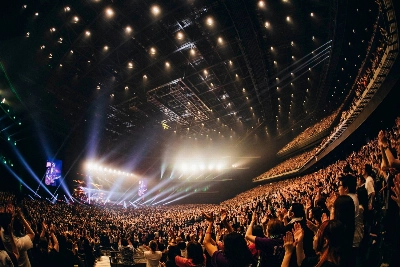North Korean leader Kim Jong Un has ordered boosted efforts to arm the country’s navy with nuclear weapons, state-run media reported Wednesday.
Kim directed officials to push forward equipping his naval forces with nuclear-tipped arms following two days of weapons testing of the country’s newest destroyer, the Choe Hyon, on Monday and Tuesday.
“Saying that the time has come to make a responsible option for accelerating the nuclear armament of the navy in order to defend the state and maritime sovereignty from the existing and future threat, he set forth different tasks for realizing it,” the official Korean Central News Agency reported.
The report on the weapons test hinted that the 5,000-ton Choe Hyon was already being equipped with nuclear-tipped weapons, including a “supersonic cruise missile,” “strategic cruise missile” and “tactical ballistic missile,” though the latter was apparently not tested.
North Korea often uses the word “strategic” to refer to weapons that are nuclear capable, while “tactical” can refer to missiles that can be fitted with lower-yield battlefield nuclear bombs or conventional warheads. Photos released by KCNA during an event ahead of the weapons test appeared to show Hwasal-series “strategic” land-attack cruise missiles and a Hwasong-11-series short-range ballistic missile, which has a “tactical” variant.
Such weapons could put all of South Korea in range, but the missiles will also be of concern for Japan and the U.S.
Just days after U.S. President Donald Trump’s Jan. 20 inauguration, Pyongyang tested strategic cruise missiles that it claimed had “precisely” hit targets after traveling along 1,500 kilometer-long elliptical and figure-eight-shaped flight paths for a little over two hours each.
Those tests, it said, were part of “war deterrence means” that “are being perfected more thoroughly.” In January and February of last year, Pyongyang also conducted several rounds of cruise missile tests.
The North has boasted that its most advanced longer-range cruise missiles have flown up to 2,000 km before hitting preset targets. Such a distance would put virtually all of Japan — including key U.S. military bases — within striking distance.
Experts say cruise missiles present a unique danger in that they can fly low and maneuver, making them potentially very difficult to intercept by air and missile defenses. Unlike ballistic weapons, North Korea’s cruise missiles are not banned under United Nations sanctions imposed on Pyongyang.
Kim has overseen a vast military modernization program, though it’s unclear how much of this is merely cosmetic considering the limitations onerous sanctions have on the regime securing the means for building up his forces.
In March, Kim announced that his country was building its first “nuclear-powered strategic guided missile submarine.” The North has also tested what it calls “nuclear-capable underwater attack drones” that it says are intended to make sneak attacks in enemy waters and destroy naval strike groups and major ports.
As for the new destroyer, more work might still be necessary before the warship is deployed, the North Korea-monitoring 38 North website said in an analysis released Tuesday of satellite imagery that showed tugboats nudging the vessel back toward its drydock following its launch ceremony last week.
"The use of tugboats to move the ship into place and back again could indicate the lack of a functioning propulsion system," the analysis said.
U.S., Japanese and South Korean officials fear that Pyongyang may be receiving technological help from Moscow to help modernize its military in return for Kim dispatching some 14,000 troops, as well as missiles and artillery, to aid Moscow in its war against Ukraine.
In one possible example of this, the new destroyer's missile and radar systems appear to resemble those made in Russia.
"It is highly likely that North Korea received up-to-date military technology from Russia in exchange for its troop dispatch," the Yonhap news agency quoted South Korean Rep. Yu Yong-weon of the People Power Party as saying.
North Korea on Monday formally confirmed for the first time that it has sent troops to Russia for the conflict, with KCNA saying that its forces had helped “liberate” the Kursk region from Ukrainian control.
Although North Korea’s top military body said operations in Kursk had concluded, Russian state media quoted Andrey Kartapolov, head of the Russian State Duma's defense committee, as saying Tuesday that North Korean soldiers could take part in combat operations in other regions. Kremlin spokesman Dmitry Peskov declined to comment on the remarks.






















With your current subscription plan you can comment on stories. However, before writing your first comment, please create a display name in the Profile section of your subscriber account page.